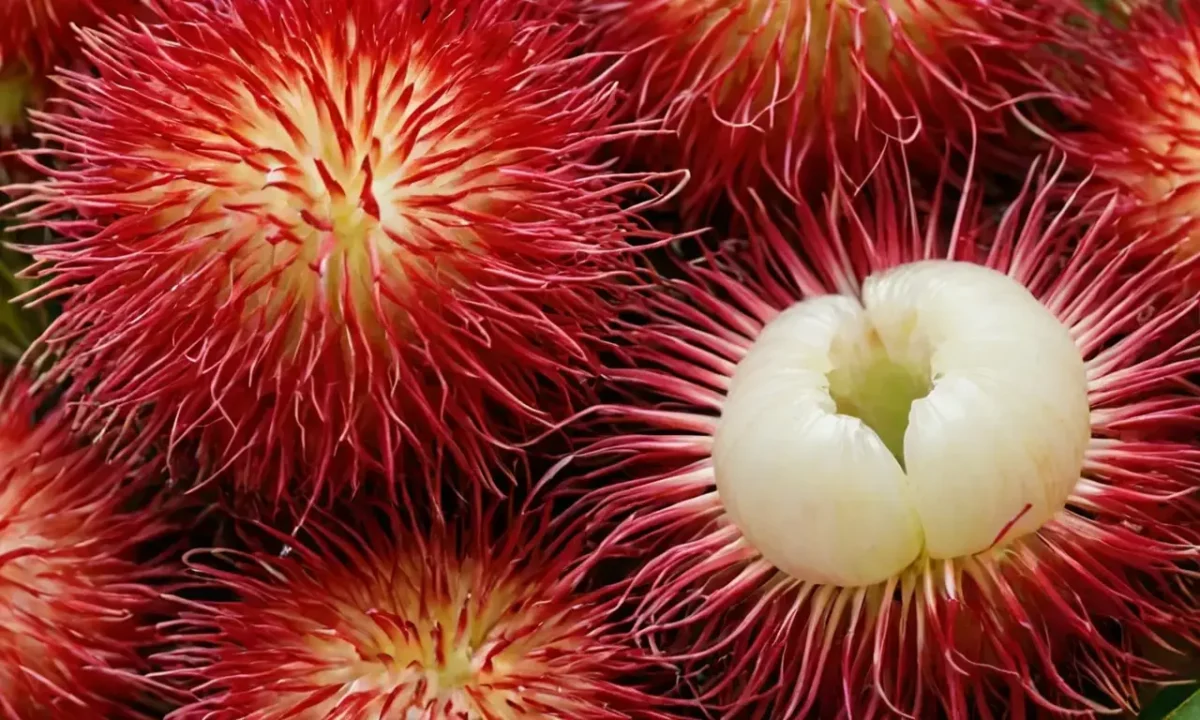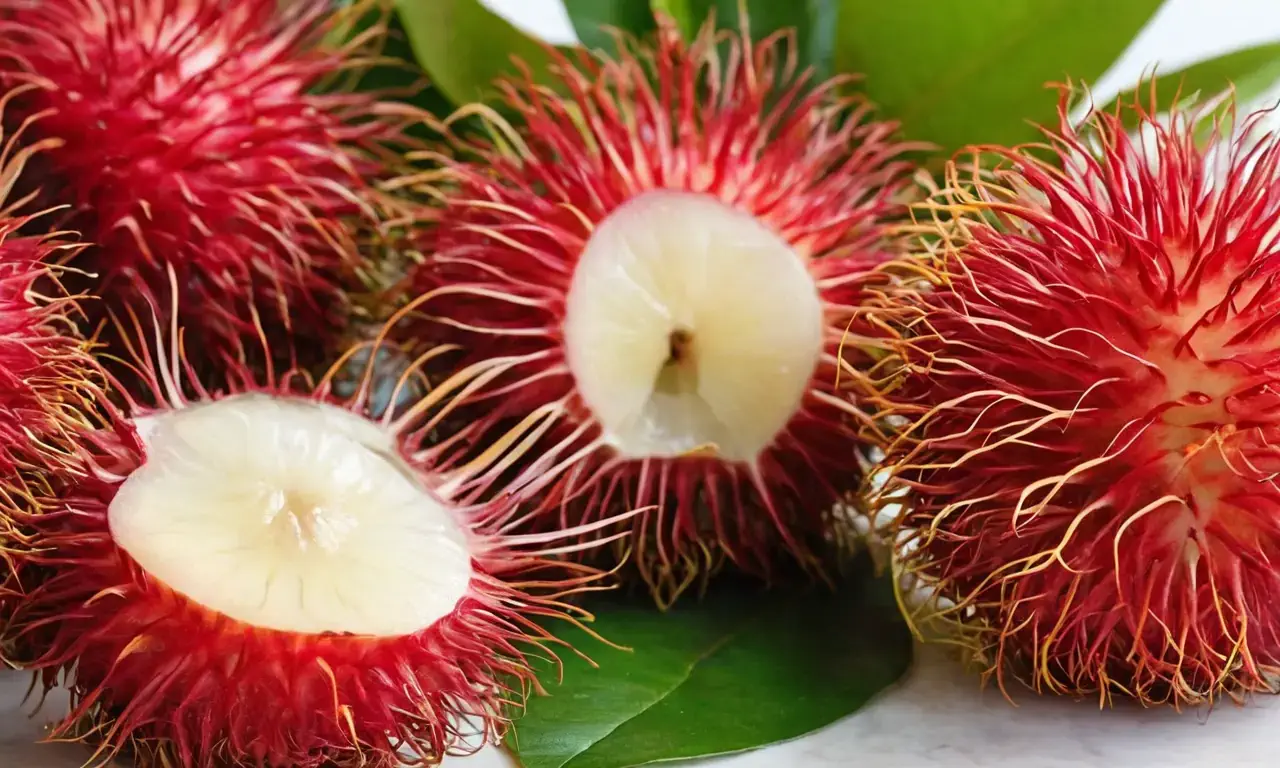
Rambutan: Exotic Fruit with Antioxidant Properties

The rambutan is a tropical fruit that has gained popularity worldwide for its unique appearance and numerous health benefits. Native to Malaysia and Indonesia, this exotic fruit has been cherished by locals for centuries due to its distinctive taste and versatility in various culinary applications. The rambutan's spiny exterior and soft interior have led many to wonder about its origins and characteristics.
This article aims to delve into the world of rambutan origin, exploring its history, nutritional value, health benefits, and uses in cooking. We will also examine the differences between rambutans and lychees, as well as other interesting facts that set this fruit apart from others. Whether you're a seasoned foodie or simply curious about new fruits, this comprehensive guide is sure to provide valuable insights into the fascinating world of rambutan.
What is Rambutan?
The rambutan (Nephelium lappaceum) is a tropical fruit that belongs to the Sapindaceae family. It grows on evergreen trees that can reach up to 80 feet in height, typically producing two crops per year. The name "rambutan" comes from the Malay word "rambut," meaning hair, which refers to the fruit's hairy exterior. This unique appearance has led many to describe it as a sea urchin looking fruit.
Rambutans are small, round or oval in shape and come in various colors such as red, orange, and yellow. The skin is thin and edible, while the pulp inside is soft and juicy. When ripe, the rambutan's flavor profile is often compared to an exotic grape with a perfumed taste. This distinctive flavor has made it a sought-after ingredient in many recipes.
Origin of Rambutan
The rambutan origin dates back thousands of years to the tropical regions of Southeast Asia, specifically in Malaysia and Indonesia. It is believed that the fruit was first cultivated by indigenous communities who valued its nutritional properties and versatility in cooking. Over time, rambutans spread throughout the region and were introduced to other parts of the world through trade and migration.
Today, rambutans are grown commercially in many tropical countries, including Thailand, Vietnam, and the Philippines. Despite its global popularity, the fruit remains relatively unknown in Western cultures, making it a fascinating discovery for those who have yet to try it.
Description of Rambutan
One of the most striking features of the rambutan is its appearance. The fruit's spiny exterior gives it a unique texture that sets it apart from other fruits. When ripe, the skin turns from green to various shades of red, orange, or yellow, depending on the variety. The pulp inside is soft and juicy, with a sweet flavor profile.
Rambutans are typically small in size, ranging from 1-3 inches in diameter. They have a short stem that attaches them to the tree, making harvesting by hand a necessary process. This labor-intensive method contributes to the fruit's relatively high price compared to other tropical fruits.
Taste and Texture

The taste of rambutan is often described as sweet and slightly acidic, similar to an exotic grape. When ripe, the flavor profile is more pronounced, with hints of citrus and a perfumed aroma. The texture is soft and juicy, making it a pleasure to eat fresh or use in various recipes.
Rambutans are best consumed when they are fully ripe, as this enhances their natural sweetness and flavor. However, due to their short shelf life, it's essential to consume them within three days of harvesting for optimal taste and texture.
Nutritional Value
The rambutan is a nutrient-rich fruit that offers numerous health benefits. It is an excellent source of vitamins A, C, and B-5, as well as minerals such as copper and iron. The high water content in rambutans makes them an ideal snack for those looking to stay hydrated.
One serving of rambutan (about 100 grams) contains approximately 60 calories, making it a guilt-free addition to any diet. Additionally, the fruit's antioxidant properties help protect against cell damage and inflammation, contributing to overall well-being.
Health Benefits
The rambutan is renowned for its numerous health benefits, primarily due to its high content of vitamins and minerals. The antioxidants present in rambutans have been shown to reduce oxidative stress and inflammation in the body, which can lead to chronic diseases such as heart disease and cancer.
Consuming rambutans regularly may also help improve digestion by providing fiber and promoting a healthy gut microbiome. Furthermore, the fruit's high water content makes it an excellent choice for those looking to stay hydrated and support kidney function.
Uses in Cooking
The rambutan is a versatile ingredient that can be used in various culinary applications. Fresh rambutans are perfect for snacking or adding to salads, while their juice can be used as a base for smoothies or desserts. The fruit's unique flavor profile also makes it an excellent addition to baked goods and desserts.
In Southeast Asian cuisine, rambutans are often paired with coconut milk and spices to create sweet and savory dishes. The fruit's versatility in cooking has led many chefs to experiment with new recipes that showcase its unique taste and texture.
Growing Conditions
Rambutan trees prefer a warm and humid climate, typically thriving in regions with average temperatures between 64°F and 90°F (18°C and 32°C). They require well-drained soil and full sun to produce optimal yields. Rambutans are also sensitive to frost, making them unsuitable for cultivation in cooler climates.
In their natural habitat, rambutan trees can grow up to 80 feet tall, requiring regular pruning to maintain a manageable size. The fruit's short shelf life necessitates careful harvesting and handling to ensure its quality is maintained throughout the supply chain.
Harvesting Methods
Rambutans are typically harvested by hand due to their delicate nature and the need for precise timing. Farmers carefully select ripe fruits from the tree, taking care not to damage the skin or pulp during the process. The short shelf life of rambutans means that they must be consumed within three days of harvesting.
To extend its shelf life, some farmers use specialized equipment to remove the spines and pack the fruit in airtight containers. This method helps preserve the flavor and texture of the rambutan for a slightly longer period but still requires careful handling and storage.
Shelf Life
The rambutan has a relatively short shelf life compared to other fruits, lasting only three days when ripe. This means that farmers must carefully harvest and handle the fruit to ensure its quality is maintained throughout the supply chain.
To extend the shelf life of rambutans, some producers use specialized packaging techniques or store them in refrigerated conditions. However, even with these precautions, the fruit's delicate nature makes it challenging to preserve for extended periods.
Conclusion
The rambutan is a unique and nutritious fruit that offers numerous health benefits and culinary applications. Its distinctive appearance, sweet flavor profile, and versatility in cooking make it an exciting discovery for those who have yet to try it. While its short shelf life presents challenges in cultivation and handling, the rewards of consuming this tropical delight far outweigh any drawbacks.
As more people become aware of the rambutan's benefits, it is likely that this fruit will continue to gain popularity worldwide, providing a delicious and nutritious addition to various cuisines and diets.
Leave a Reply





Related Links